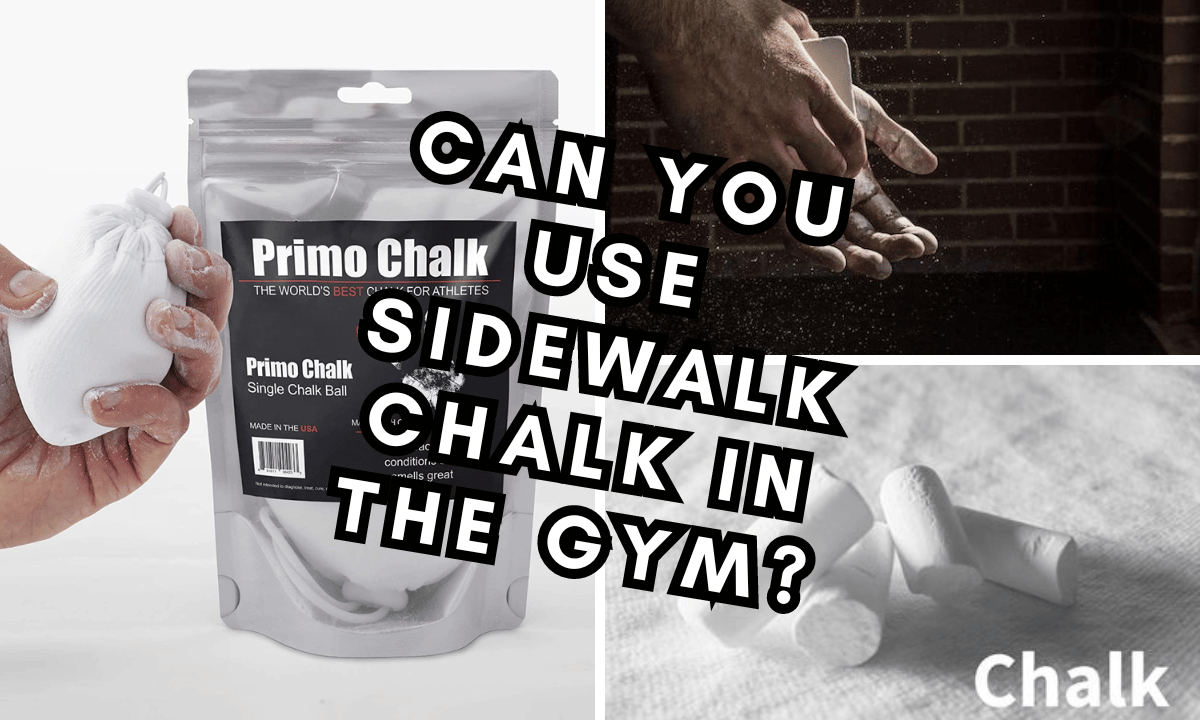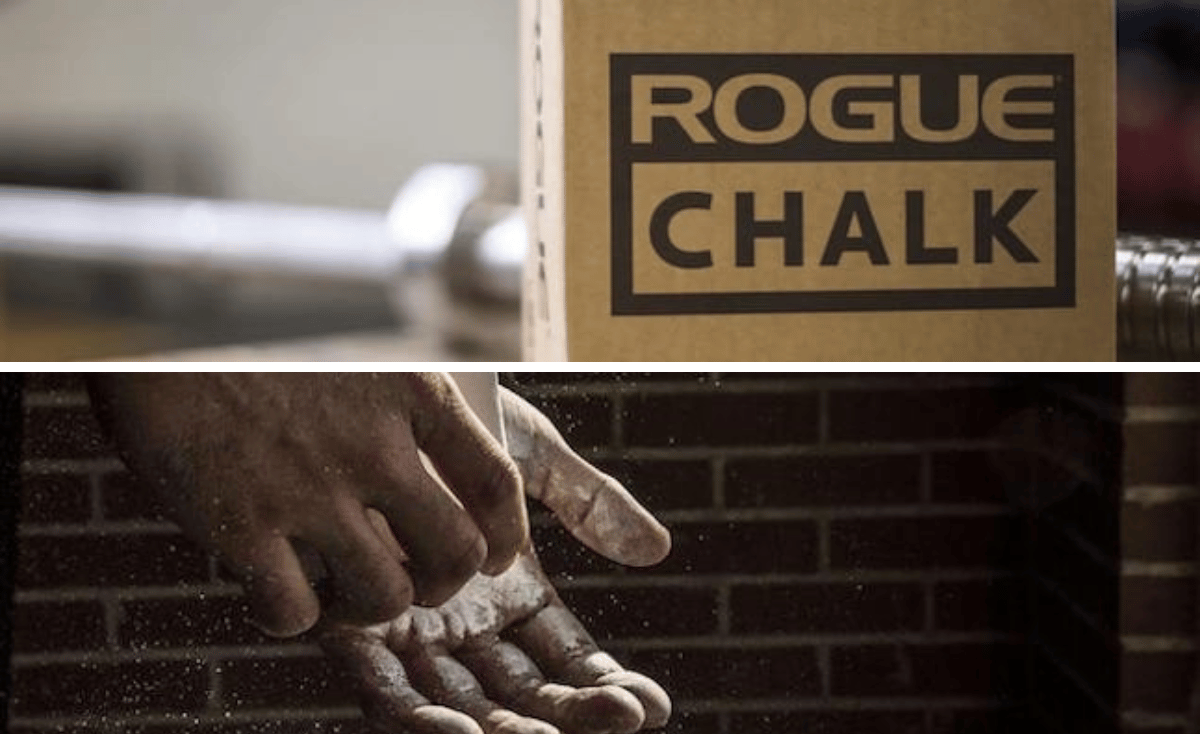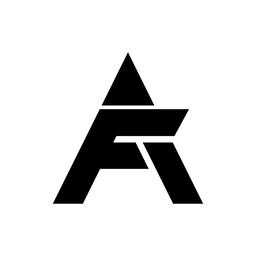Chalk is a crucial yet often overlooked component in the world of fitness, especially in deadlifting. Have you ever wondered, “why do people use chalk when deadlifting?” This comprehensive blog post will unveil the hidden benefits of chalk, explore its various types, and compare it to other grip enhancers.
We will also delve into proper application techniques and the role of chalk in powerlifting, rock climbing, and gymnastics. So, let’s dive in and uncover the secrets of chalk to elevate your deadlifting game!
Key Takeaways
- Chalk is an essential tool for deadlift performance, providing grip stability, moisture absorption and blister prevention.
- Chalk increases friction between hands and the object being gripped to improve lifting performance while absorbing moisture to reduce slippage.
- Adhering to gym policies and etiquette related to chalk use is important for creating a positive gym experience. Alternatives are available in chalk-free gyms.
The Power of Chalk in Deadlifting
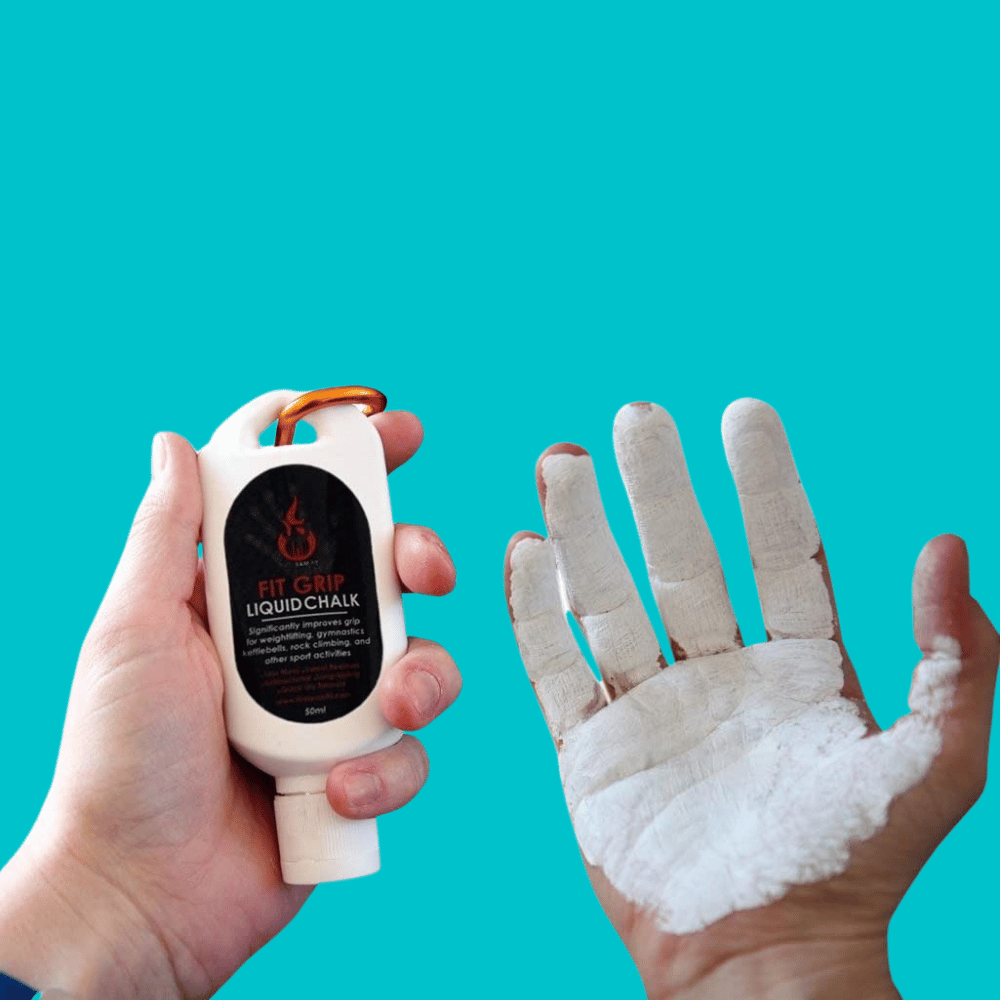
Chalk is a game-changer when it comes to deadlifting. It serves as a powerful tool to enhance grip stability, absorb moisture, and prevent blisters. The simple act of applying chalk to your hands and barbell can make a significant difference in your deadlifting performance by providing better grip, reducing the risk of slipping, and protecting your hands from injuries.
Let’s explore the underlying mechanics behind chalk’s effectiveness in these areas.
Enhanced Grip Stability
Paragraph 1: Grip stability significantly contributes to deadlifting performance. Chalk works wonders in improving grip stability by absorbing sweat and reducing moisture on your hands, creating a stronger and more reliable grip on the barbell.
This prevents the barbell from slipping, allowing you to lift heavier weights with confidence and control.
Paragraph 2: But what’s the science behind chalk’s impact on grip stability? Scientifically speaking, chalk increases friction between your hand and the object being gripped by reducing moisture and creating a dry surface.
This enhanced grip stability not only allows for more precise control but also activates your forearm muscles, contributing to overall lifting performance.
Moreover, improved grip stability is beneficial for other exercises like chin-ups, pull-ups, and utilizing a mixed grip.
Moisture Absorption
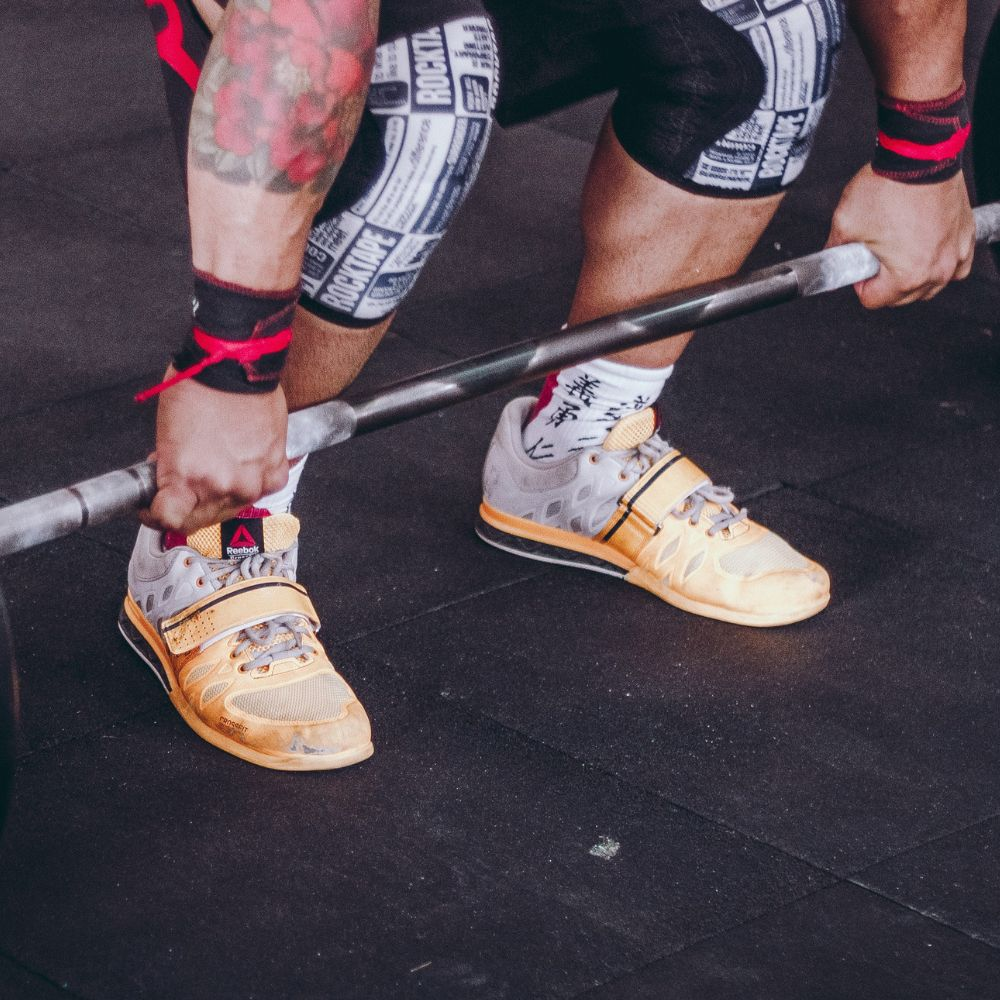
Sweaty hands can be a deadlifter’s worst nightmare, as moisture reduces friction between the skin and the bar, resulting in a slippery and challenging grip. Enter chalk, the moisture-absorbing superhero!
Chalk has a high capacity for absorbing moisture particles and dirt, acting as a dehumidifier and protecting against moisture damage and odors.
You might wonder, how does chalk’s moisture-absorbing property enhance the deadlifting experience? By absorbing sweat and creating a dry surface on your hands, chalk increases the friction between your hands and the bar, enabling a much more secure grip.
This reduces the risk of the weight slipping out of your hands during heavy lifts, ensuring a safer and more efficient deadlifting experience.
Applying chalk properly is key to optimizing moisture absorption; it’s important to apply it evenly and generously to your hands and the barbell.
Blister Prevention
One of the most common issues faced by deadlifters is the formation of blisters and calluses on their hands due to friction with the barbell. Chalk comes to the rescue once again!
By creating a barrier between your hands and the bar, chalk reduces friction and helps prevent blisters and calluses. But what’s the mechanism behind chalk’s blister-preventing role?
The scientific rationale behind chalk’s blister prevention properties lies in its ability to absorb moisture and create a dry surface on your hands. This improves grip by increasing the coefficient of friction between your hands and the barbell, reducing the likelihood of the barbell slipping during the lift and minimizing skin irritation.
So, not only does chalk improve your grip and performance, but it also keeps your hands in better shape!
Types of Chalk for Deadlifting
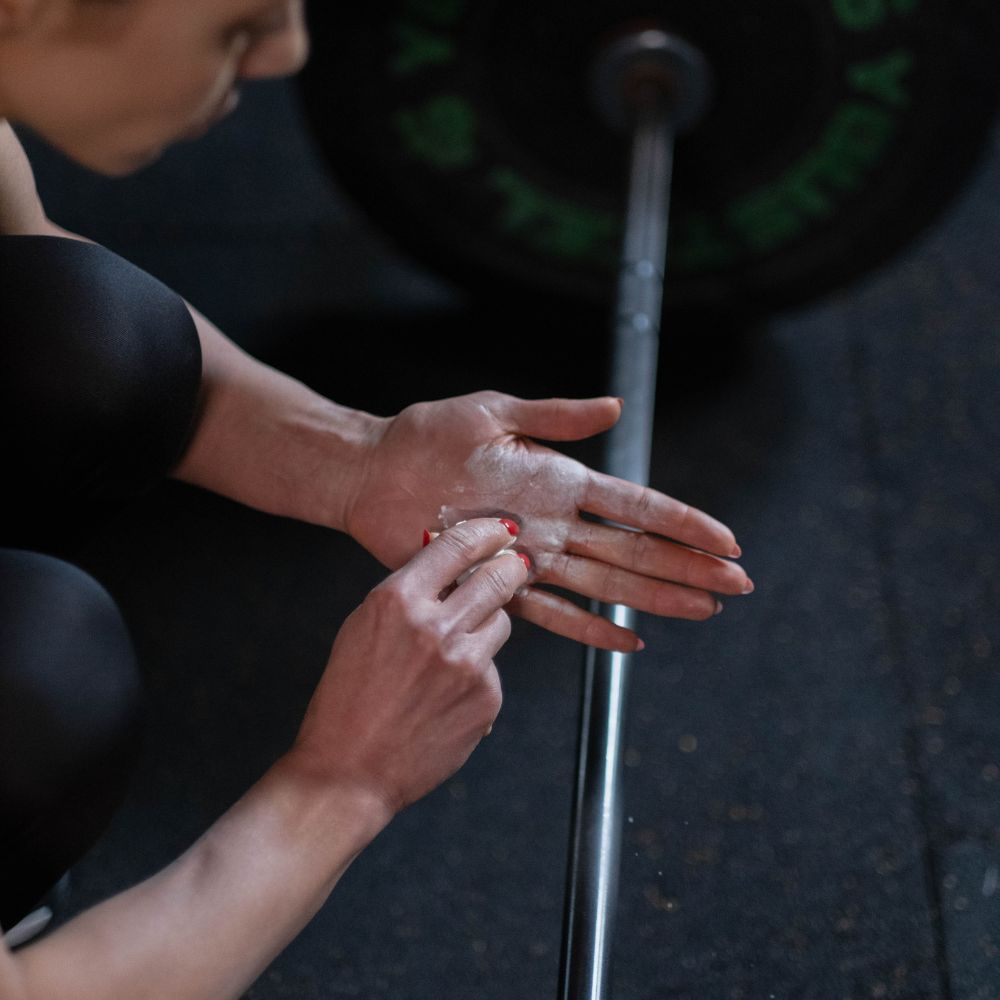
There are three main types of chalk used for deadlifting: powder, block, and liquid, each with its own unique set of advantages and disadvantages. Next, we’ll examine each type’s characteristics to help you select the best one for your deadlifting needs.
Powder Chalk
Powdered chalk, sometimes confused with baby powder, is the most commonly used type of chalk in deadlifting, primarily composed of magnesium carbonate. Its main advantage is its widespread use and ability to enhance grip during weightlifting exercises.
However, powdered chalk has its drawbacks, such as its messiness and the need for frequent reapplication.
Paragraph 2: The messiness of powder chalk is a result of the visible dust it creates on the gym floor, surfaces, and equipment. This can be aesthetically displeasing and make the gym appear untidy.
Furthermore, the dust can be easily disturbed and dispersed, resulting in further messiness.
Paragraph 3: Despite the messiness, many deadlifters still prefer powder chalk due to its grip-enhancing effectiveness.
Block Chalk
Block chalk is a form of loose chalk that has been compressed. It has the shape of a bar of soap. Composed of magnesium carbonate, it offers excellent friction and keeps hands dry.
The main advantage of block chalk is that it is tidier than powder and can be applied simply by rubbing it onto the hands. The downside, however, is that it can transfer onto the bar and clothing.
To use block chalk effectively in deadlifting, follow these steps:
- Apply the chalk to your hands, covering the palms and fingers, focusing on areas that make contact with the barbell.
- Block chalk helps absorb moisture on your palms and fingers and allows for a better grip on the bar, enabling you to lift more weight and perform the exercise more effectively.
- Proper storage and handling are essential to minimize mess and ensure optimal performance.
Liquid Chalk
Liquid chalk is a solution of magnesium carbonate suspended in alcohol for rapid drying. It is the least messy option and dries quickly, making it a popular choice for gyms that do not allow traditional chalk.
However, liquid chalk may not offer the same level of grip enhancement as powder or block chalk and can take a significant amount of time to dry.
Despite its limitations, liquid chalk in its liquid form is often accepted in gyms that have a no-chalk policy due to its reduced mess and quick-drying formula. It is also a convenient option for those who want to avoid the mess associated with powder or block chalk, as it can be applied discreetly and with minimal dust.
Liquid chalk is a versatile option that can be used in various sports and activities requiring improved grip.
Chalk vs. Other Grip Enhancers

Chalk is often compared to other grip enhancers, such as straps and gloves, with each having its own benefits and drawbacks. Next, we’ll compare chalk with these alternatives, discussing their advantages and disadvantages.
Chalk vs. Straps
Chalk is generally preferred for powerlifting, as it strengthens grip and allows for better control during heavy lifts. On the other hand, lifting straps provide assistance and are better for hypertrophy and technique work.
Straps can be a beneficial resource for powerlifters and frequent gym-goers when used correctly and not over-relied upon.
Overusing straps can inhibit the development of grip strength, making it challenging to lift maximum weights without assistance. Chalk, on the other hand, promotes grip strength development, allowing you to lift heavier weights without the need for straps.
The decision to use chalk or straps will depend on your personal goals, preferences, and the requirements of your training program.
Chalk vs. Gloves
Gloves can provide some grip enhancement, but they may reduce sensory feedback and impede grip strength development. While gloves can offer sweat absorption and protection from skin tears, chalk is generally regarded as a more hygienic option.
The choice between chalk and gloves depends on individual preferences, as well as the specific requirements of your training program.
It is worth noting that no authoritative study has been conducted to determine the effect of gloves on grip strength. However, many athletes and gym-goers prefer to use chalk rather than gloves to ensure a more natural grip on the bar, as well as to promote grip strength development, as this is where the grip begins.
Whether you choose chalk or gloves will hinge on your goals, the nature of your training, and your personal preferences.
Proper Chalk Application Techniques

Proper chalk application techniques can maximize its effectiveness and minimize mess, ensuring optimal performance during deadlifts and other lifting exercises. Next, we’ll address hand coverage, barbell preparation, and chalk storage and cleanliness, all crucial in maximizing the benefits of chalk.
Hand Coverage
Ensuring even coverage on your hands when applying chalk is essential for a secure grip on the barbell. Uneven chalk coverage can lead to inconsistent grip strength and decreased stability, making it more difficult to maintain a secure grip on the barbell.
To guarantee thorough and even chalk coverage on your hands, it is crucial to follow proper application techniques.
Take a generous amount of chalk powder in one hand and place it in the center of the palm of your other hand. Rub your hands together to distribute the chalk evenly, providing a consistent grip during your deadlifts.
Pay special attention to the areas that will be in contact with the barbell, such as the palms and fingers, to ensure optimal grip strength and performance.
Barbell Preparation
Paragraph 1: Preparing the barbell by applying chalk to the knurling can further improve your grip during deadlifting. Chalking the barbell where it will make contact with your upper back can generate friction and avoid slipping, particularly in hot and humid conditions.
Paragraph 2: To apply chalk to the barbell, brush off any excess chalk on the barbell with a brass brush to ensure that the knurling is exposed. It is also important to ensure that just enough chalk is used to keep the hands dry, without overusing the chalk.
Paragraph 3: Applying chalk to the hands before warming up and before work sets can help improve grip on the barbell and enhance your deadlifting performance.
Chalk Storage and Cleanliness
Storing chalk in a container or bag can help maintain gym cleanliness and avoid spills and messes. Airtight containers such as waist-height containers or home improvement buckets are recommended for chalk storage. If these are not available, a ziplock bag or a plastic container can be used to store loose chalk.
Cleaning up after using chalk is essential for maintaining a positive gym environment and adhering to gym policies. Here are some steps to follow:
- Use a damp towel to wipe down any equipment touched to remove chalk dust.
- Maintain cleanliness in the gym by cleaning up after yourself.
- Remember to always abide by the gym’s rules regarding the use of chalk.
- Practice proper chalk etiquette.
The Role of Chalk in Powerlifting and Other Sports
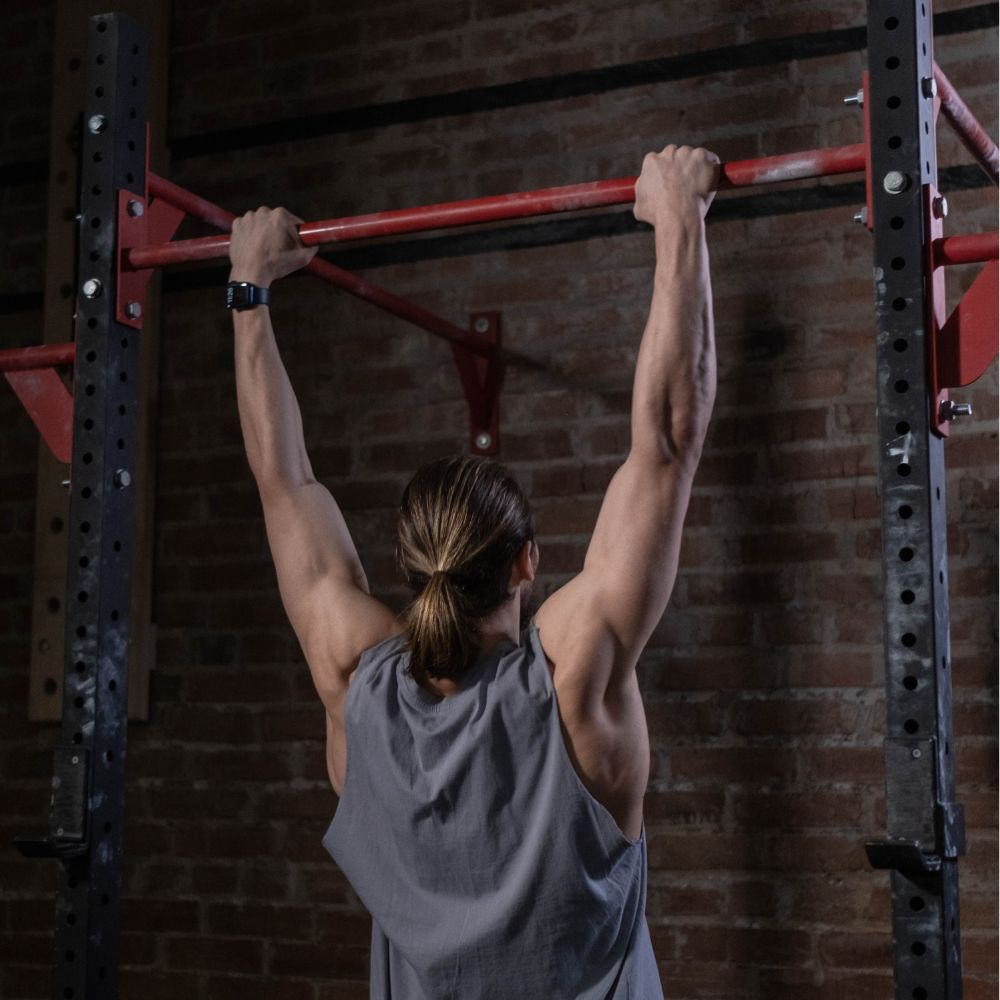
Chalk is not only beneficial for deadlifting but also plays a crucial role in powerlifting, rock climbing, and gymnastics.
Let’s now examine chalk’s role in different sports and discuss its benefits and applications.
Powerlifting
In powerlifting, chalk is used to:
- Improve grip
- Prevent injuries during heavy lifts
- Serve as a protective layer over the hands
- Provide better grip security
- Reduce sweat and moisture
- Improve grip security
By using chalk, powerlifters can prevent potential injuries and enhance their performance, overcoming a limiting factor in their training.
Chalk is also beneficial for other lifts in powerlifting, such as squats and bench presses, where it can provide a stable surface and reduce the risk of slipping. By absorbing moisture and creating a dry surface on the skin, chalk enables powerlifters to:
- Maintain greater friction
- Hold onto the barbell more effectively
- Allow for better control
- Improve performance during lifts
Rock Climbing
Rock climbers rely on chalk to maintain grip on holds and reduce the risk of falls. Chalk assists by increasing friction and improving grip on the holds due to its ability to absorb sweat and moisture on the hands.
By creating a dry surface on the skin, chalk enables climbers to hold onto climbing holds more effectively, enhancing their performance and minimizing the risk of slipping during climbs.
Proper application of chalk is essential in rock climbing, as uneven chalk coverage can lead to inconsistent grip strength and decreased stability on the holds.
By ensuring thorough and even chalk coverage on the hands, rock climbers can maximize their grip strength and reduce the risk of falls during climbs.
Gymnastics
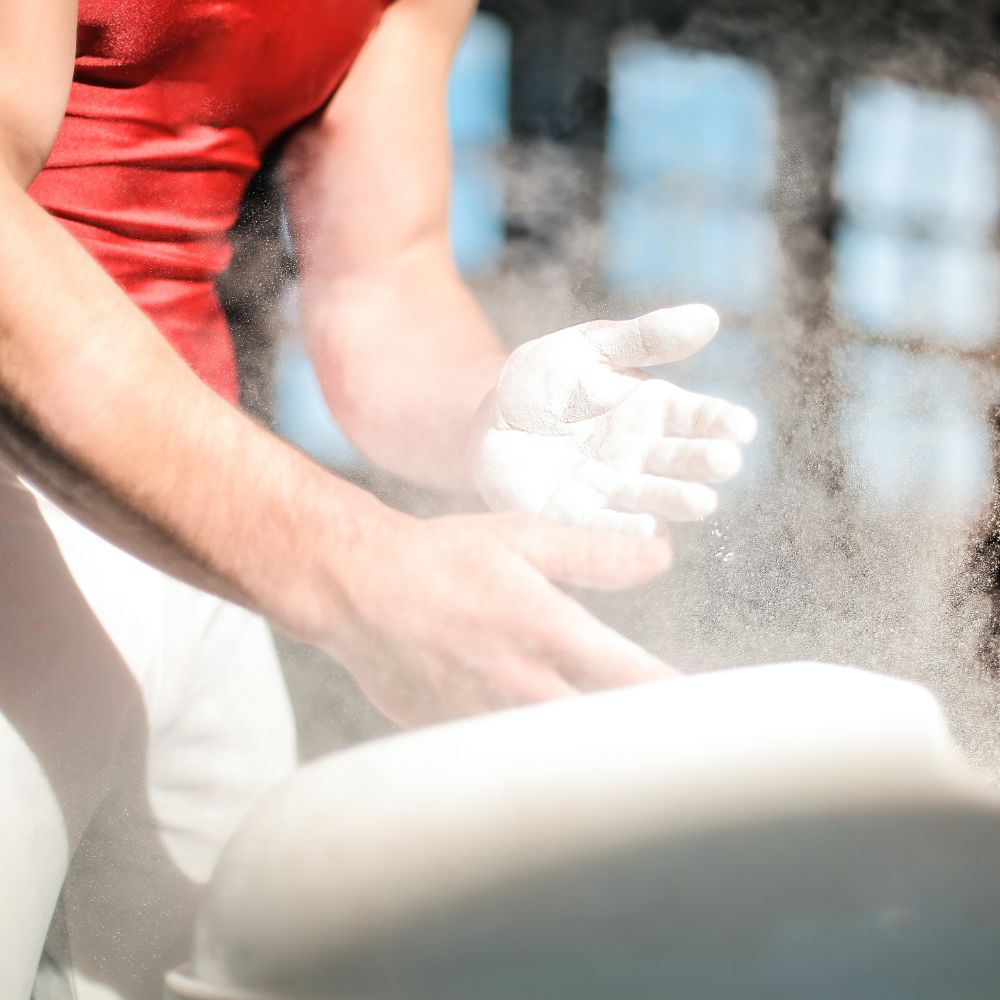
Gymnasts use chalk to enhance grip on apparatuses, such as bars and rings, and prevent slipping during routines. Chalk absorbs sweat from the gymnasts’ hands, providing a better grip on the equipment and reducing friction between the hands and the equipment, thus allowing for smoother movements and preventing blisters.
Proper chalk application is crucial in gymnastics to ensure a secure grip on apparatuses and prevent slipping during routines. By applying chalk directly to the hands or feet and not to the apparatus being used, gymnasts can minimize the risk of slipping and enhance their performance during training and competitions.
Chalk Etiquette and Gym Policies
Understanding gym policies regarding chalk use and practicing proper etiquette can help maintain a positive gym environment and ensure compliance with gym rules and regulations.
Next, we’ll discuss the significance of understanding your gym’s chalk use rules and consider alternatives for chalk-free gyms.
Understanding Gym Rules
Familiarizing yourself with gym rules regarding gym chalk use is essential, as some facilities may ban it due to mess or respiratory concerns. By complying with gym rules and regulations, you can ensure a favorable gym atmosphere and avoid potential conflicts with gym staff and other members.
If your gym does not permit chalk, alternatives such as liquid chalk or discreet application of chalk to the hands may be considered. Liquid chalk is a popular choice for gyms that do not allow traditional chalk due to its reduced mess and quick-drying formula.
By using these alternatives, you can still enjoy the benefits of chalk without violating gym policies.
Alternatives for Chalk-Free Gyms

If your gym does not allow chalk, there are several alternatives you can consider to enhance your grip and performance during deadlifts and other exercises. Liquid chalk is an effective option, as it produces less mess and dries quickly. Other alternatives include chalk balls, grip enhancers, and gloves.
By using these alternatives, you can still enjoy the benefits of chalk without violating gym policies or creating a mess in the gym. It is important to respect gym rules and practice proper etiquette when using chalk or any other grip enhancers in a gym setting, ensuring a positive environment for all gym members.
Summary
In conclusion, chalk is an indispensable tool in deadlifting, powerlifting, rock climbing, and gymnastics, providing enhanced grip stability, moisture absorption, and blister prevention.
Understanding the various types of chalk and their respective advantages and disadvantages, as well as comparing chalk to other grip enhancers, can help you make an informed decision about which option is best for your needs.
By practicing proper chalk application techniques, understanding gym policies, and observing chalk etiquette, you can enjoy the benefits of chalk and elevate your performance in deadlifting and other sports.
Frequently Asked Questions
Should you use chalk while Deadlifting?
Chalk is a useful tool when doing heavy lifts like deadlifts, as it provides a better grip and protects your hands from skin tears.
Why does chalk help with deadlift?
Chalk helps with deadlift by absorbing moisture from sweaty hands, improving the connection between them and the barbell, and strengthening grip to help prevent blisters. This results in a stronger lift and better performance.
How much does chalk help on deadlifts?
Chalk can help strengthen your grip when deadlifting, which allows you to lift more weight. It dries slick hands and creates friction between the skin and weight, enabling you to better hold on to the bar and increase your performance.
Can I use chalk for other exercises besides deadlifting?
Yes, you can use chalk for other exercises besides deadlifting, such as pull-ups, chin-ups, and other lifts that require a firm grip on the barbell.
What type of chalk is best for a home gym?
For a home gym, block or liquid chalk is the recommended option due to less mess compared to powder chalk.
